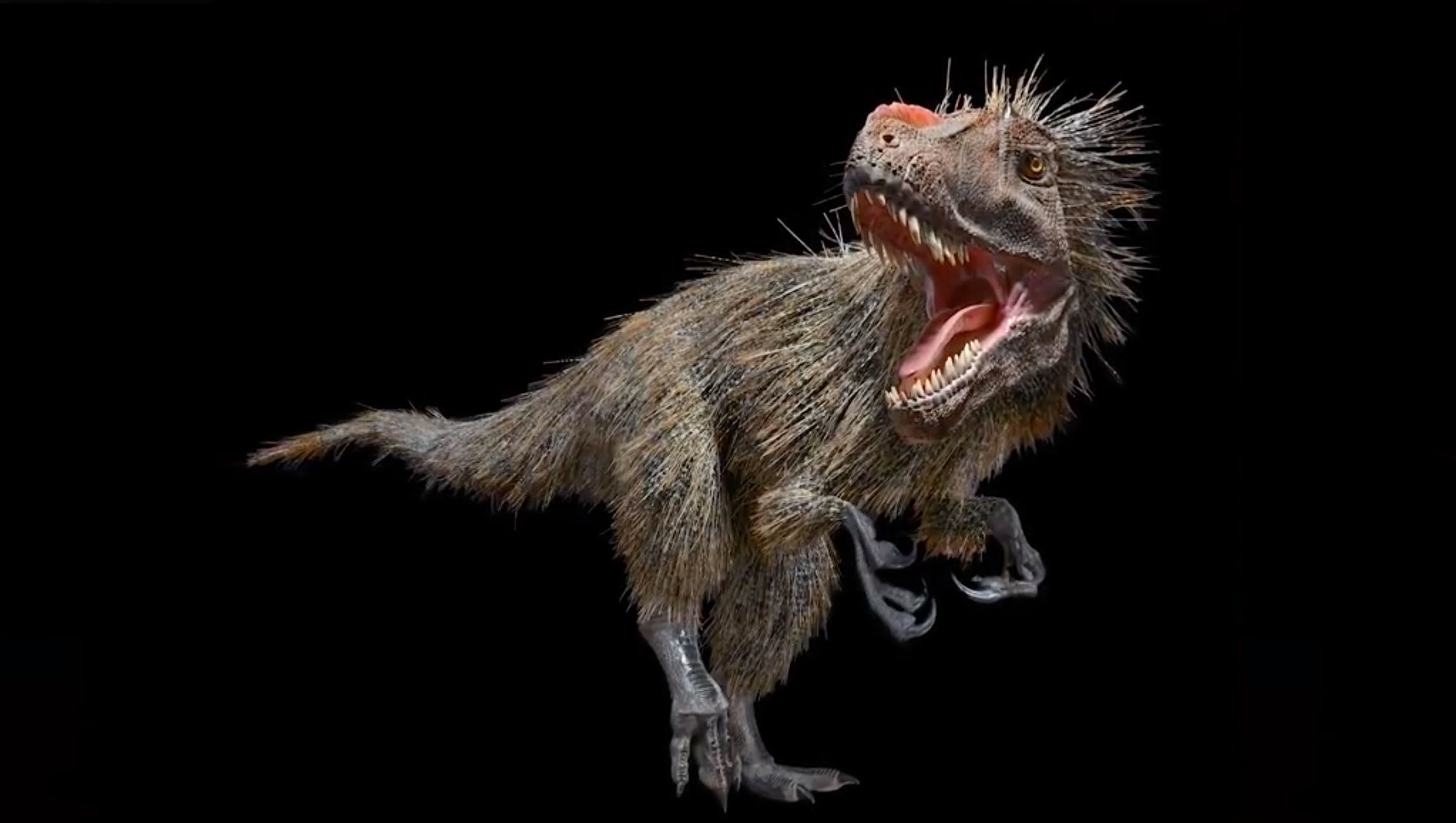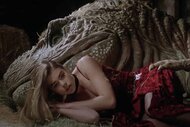Create a free profile to get unlimited access to exclusive videos, sweepstakes, and more!
The earliest known dino feather parasite proves even dinosaurs had an itch to scratch

When you were a kid, was everyone checked for head lice by the school nurse at least once a year? Too bad there wasn’t anyone to comb through the plumage of some Cretaceous feathered dinosaurs.
Head lice aren’t too different from a similar creature that lived about 100-66 million years ago and had an appetite for feathers. Mesophthirus engeli is a previously unknown and recently discovered species that was found almost perfectly preserved in amber along with two different dinosaur feathers. Found in Myanmar, which is famous for insect specimens frozen in amber, the 10 nymphs (juveniles) of this species that were studied are the likely suspects behind the chewed-up feathers. This makes them the oldest feather-feeding parasites ever unearthed.
M. engeli was an integument feeder. Unlike parasites that gorge on blood and inner organs, what integument feeders find particularly tasty is anything that functions as the outer shield of an animal — skin, hair, scales, and in this case, feathers. This also makes it ectoparasitic, as opposed to endoparasitic life forms that live inside the body, like ringworms and tapeworms. Lice and fleas are also ectoparasites. There is one species of lice that feeds exclusively on birds’ skin and feathers. The oldest known fossilized louse is 56-39 million years old, so M. engeli is kind of a big deal in the realm of parasites.
“The [feather] damage … was probably made by these insects’ integument-feeding behaviors,” said paleontologist Doug Ren and colleagues in a study recently published in Nature Communications. “This finding demonstrates that feather-feeding behaviors of insects originated at least in mid-Cretaceous, accompanying the radiation of feathered dinosaurs including early birds.”
While M. engeli is not actually a louse, the creepy-crawlies do share DNA. The genetic relationship could help expand our knowledge of how integument feeders evolved. Apparently, the nymphs had started chewing on two dinosaur feathers with their especially sharp teeth before they perished in tree sap. The holotype (original specimen that is the first of its kind and sets the standard for characteristics of its species) of M. engeli is the largest nymph at just 229 micrometers long. While Ren and his team are not exactly sure what size the adults could grow to, they estimate a length of about 0.4-0.5 millimeters.
To give you an idea, the insects were semitransparent and so tiny that the team has yet to make out some of their characteristics. They had to be photographed with a microscope that was teamed up with a digital camera.
Morphologically similar to some extant ectoparasites such as lice, some of the features M. engeli share with them are a wingless body, reduced eyes, short antennae, and short, sturdy legs made for gripping rather than jumping. Some of the nymphs still had pieces of feather in an everlasting deathgrip.
So which dinosaurs did this parasite find most delicious? The research team was unable to discern which reptilian or early bird species they were munching on from the feathers, mostly out of fear they would destroy the fragile pieces of amber if they tried to dissect them. It appeared that one was from a pennaraptoran dinosaur, a kind of raptor-ish feathered therapod, and the other seemed to be from a coelurosaurian therapod, which was even more closely related to birds than dinosaurs. Another possibility is that both feathers could have come from the same dinosaur species. Think of how many different types of feathers can be found on just one bird.
It was the holes in the feathers that “suggest that this damage was caused by insect chewing instead of a damage due to use,” Ren said.
Just rest assured that nobody is going to take a needle and extract the feather DNA from that amber in an attempt to bring Jurassic Park to life.
(via Nature Communications)














